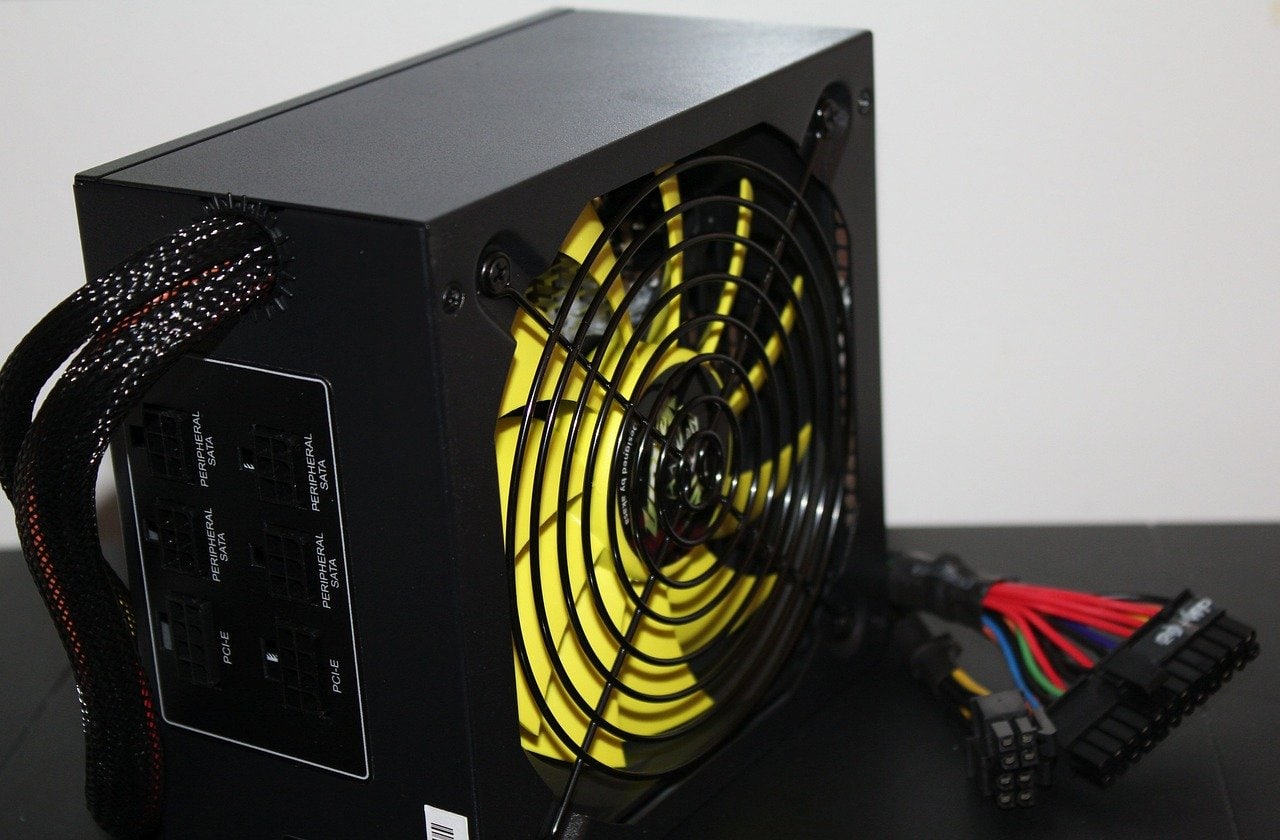
For a lot of people, the power supply unit seems like an afterthought when it comes to building a new PC. However, it plays a big part in your PC's performance and durability which means you should think carefully before choosing one.
When you're buying a PSU, you need to make sure that it supplies the required amount of wattage and that it can protect the rest of the components from surges and/or short circuits. In addition, you should also make sure you’re buying the right-sized power supply unit.
What’s an SFX power supply?
Power supply units come in different form factors and ‘SFX’ is simply one of them. SFX is one of the smaller sizes and so is well-suited for compact builds.
What's the best SFX power supply to buy?
This is a bit of a tough question to answer since it depends on the type of PC build. That's why I’ve reviewed a variety of PSUs that are great for different build scenarios.
Contents
The Specs:
The Seasonic Focus SGX is a reliable and powerful PSU with a lot of handy features. For starters, it offers a continuous supply of 650W, which is well-suited for a gaming rig that has a powerful graphics card like an RTX 2080.
This small form factor power supply unit is certified 80 Plus Gold certified which means that it's 87% efficient at 100% load and 90% efficient at 50% load. A high conversion rate like this means your PC rig is always going to be power efficient.
One thing I appreciate about the SGX-650 is that it's fully modular. This means that it doesn't come with any pre-attached cables. This is important in high-end PCs that are likely to generate more heat. When there are a lot of unused cables stuffed inside the case, it can unnecessarily restrict airflow.
The single fan that comes with this PSU was excellent. First of all, it's dead silent and only kicks in when the PC starts drawing more than 200 watts. Even then, it only starts spinning at full speed when you reach 400W. The PSU allows you to toggle between three fan modes to override its automated behaviour: Fanless, Silent and Cooling. When you’re gaming, I suggest you have it locked in Cooling mode.
Pros:
Cons:
The Specs:
The Corsair SF450 is pretty similar to the Seasonic Focus SGX-650, except that the former only supplies 450W. Hence the SF450 is suited for less powerful rigs, particularly those with mid-tier graphics cards like the GTX 1660 that require only 350W to 400W of continuous power supply.
The SF450 is 80 Plus Gold Certified which means that it's typically going to have 87% efficiency n 100% power load. This is great if you're someone who games for hours on end but wants to cut back on the electricity bill.
This PSU is fully modular as well which means you don't have to worry about having unnecessary cables that clutter up the space. This improves thermals and makes shifting things around easier when you want to add or remove components from your rig.
One thing I didn't like about this PSU was that the included cables that were pretty stiff to work with. This made cable management just a little bit difficult.
The built-in fan is pretty great overall. It's got a Zero RPM Fan Mode for low power draw scenarios, essentially kicking things into silent mode. This is great if you're watching a video using your speakers and you don't want to hear any fan noise.
Pros:
Cons:
The Specs:
This 500W PSU is well suited for compact Mini-ITX and Micro ATX builds.
It's 80 Plus Gold Certified which means that you're going to above 85% efficiency when operating at max load. Bring the load down to 50% and the efficiency spikes at 90%.
Like both of the aforementioned PSU's, the FSP Dagger 500W is also a fully modular device, resulting in better cable management. It’s designed to work with ribbon cables which bring numerous benefits to the table. For instance, they're more flexible allowing you to set up the PSU in very cramped spaces. Also, ribbon cables occupy only around half of the space that a comparable round cable would.
One thing I love about FSP Dagger 500W is all the protective features it comes with. For example, the Over Voltage Protection (OVP) protects the PSU against voltage surges while the Short Circuit Protection (SCP) makes sure that the internal components aren't damaged during a short.
Lastly, the built-in 80mm fan is pretty quiet when you're not doing anything processor-intensive on the PC. It only kicks in when you're operating at a 50% power load or higher.
Pros:
Cons:
The Specs:
This PSU from SilverStone is particularly great for more intense gaming rigs. It delivers 700W of power which means that it can support top-tier graphics cards and an extremely-overclocked CPU.
The SilverStone SX700-LPT power supply has an 80 Plus Platinum certificate, which is a step above Gold. This means that you get 90% efficiency at 20% load, 92% at 50% load, and 89% when the load is at 100%.
This powerful unit is completely modular so you don't have to struggle with excessive cabling. In addition, it's designed to work with flat/ribbon cables which you can bend and twist to more extremes than rounded cables without worrying about damages.
The SilverStone SX700-LPT PSU comes with a quiet 120mm fan that can intelligently sense when it needs to slow down and speed up. The unit operates ‘fanless’ until you reach 30% load but even then it doesn't get too loud.
Lastly, this PSU comes with a ton of protective features including Over Power Protection, Over Voltage Protection and Short Circuit Protection to make sure that the PC is safe during power fluctuations, surges, and shorts.
Pros:
Cons:
The Specs:
The FSP offers a continuous power supply of 350W which means it's more suited for PC builds with low-to-mid-tier graphics cards.
This PSU is 80 Plus Bronze certified which means that it's slightly less power efficient compared to other units on this list. However, you still get 85% efficiency at 100% load, which isn't bad at all.
Although it was made for Mini ITX cases primarily, you can use the included PS2 brackets to mount it inside an ATX case. This gives you more flexibility if you want to upgrade your case in the future.
The FSP 350W unit comes with an 80mm fan that's quiet most of the time and doesn't kick in unless you load up a game or a large application. While the fan keeps the internal components from overheating several protection features like Over Voltage Protection and Short Circuit Protection makes sure that no internals fry from power complications.
One thing I didn't like about the FSP is that it isn't modular. It comes with a bunch of pre-fixed cables that you have to manage when setting up.
Pros:
Cons:
Enermax is another reliable PSU, sporting some familiar features. It's 80 Plus Gold Certified which means you can expect a power efficiency of 87% when the load is at 100%.
It's a fully modular unit so you don't have to worry about having more cables than you need. This should make setting up very easy.
If you want to attach this PSU to an ATX case instead of a Mini ATX, you can simply use the included SFX-to-ATX PSU adapter bracket. However, make sure to check that the cable length is enough for the case beforehand.
The included 80mm fan is pretty quiet and only starts spinning when 30% of the total power draw is reached. This should ensure that things stay quiet while you're doing more lightweight tasks, especially if your CPU coolers comply as well.
Like most of the PSUs on this list, Enermax Revolution SFX 550W has several built-in protection features including Over Voltage Protection (OVP) and Short Circuit Protection (SCP).
Pros:
Cons:
The Specs:
Rounding up this list is the EVGA EVGA SuperNova 650 GM – a 650W PSU with an 80 Plus Gold certification.
This unit mimics has a lot of great features that we've seen several times before in this post. For instance, it's a fully modular unit so you don't have to worry about cables cluttering up the case. It's also got a quiet 92mm fan that you hardly notice until you start increasing the load.
One thing that's unique to the superNova is the ECO mode that keeps the fan silent during low to medium loads. This feature is fully automated so you don't need to touch any configuration settings.
Lastly, you get several of those built-in protection features that you see on a lot of high-quality PSU's these days. This includes OVP, SCP, and so on.
All in all, the EVGA SuperNova 650 GM is a solid, reliable, efficient PSU that's well-suited for high-tier PC builds.
Pros:
Cons:
The last thing you want to do is buy a PSU that's not compatible with your build. So, I've put together this brief PSU buying guide. Have a quick read before we move on to the actual product reviews:
When determining how much power your build needs, you don't need to go through the product specs of every component. What I recommend is paying attention to the GPU's Thermal Power Draw (TDP) because it's the most power-hungry part of your PC.
You need to make sure you meet the PSU you're getting meets its minimum power requirements or else it's simply not going to function properly.
On the other hand, having excessive power is a huge waste. While it might sound like a great idea, you most likely won't need a 1000 watt power supply, even when it comes to high-end gaming rigs. That's because GPU's these days are engineered to be power-efficient, even the top-tier ones.
For instance, even something as powerful as the NVIDIA Geforce RTX 2080Ti needs only 600W. However, if you're thinking of hooking up a couple of them, you might need to bump this up to 800W, especially if you’re also going to be overclocking your CPU.
The standard SFX PSUs measure 125mm in width, 63.5mm in height, and 100mm in depth. So before you buy one, make sure that your PC has a vacant space matching these SFX power supply dimensions. Typically SFX units can be fitted into either Mini ITX or Micro ATX cases because they’re brackets are compatible with them.
As you’ll see in the next section, some PSUs have small form factors but can be mounted into ATX cases because they come included with adapter brackets. So would it be a good idea to get an SFX PSU for an ATX case to save space?
In this case, it all boils down to your wattage requirements. If you can match it with an SFX power supply, then go for it.
As I mentioned at the start of this post, it really depends on the type of PC build you have. For instance, I would say the best mini ITX power supply for a high-end gaming rig would be the SilverStone SX700-LPT. It offers the most continuous power and also the highest efficiency of all the PSUs on this list.
If you’re confused about which power supply unit to go with, think back to what we discussed in the short buying guide. Calculate the wattage you need and consider the amount of free space you have in your case.
